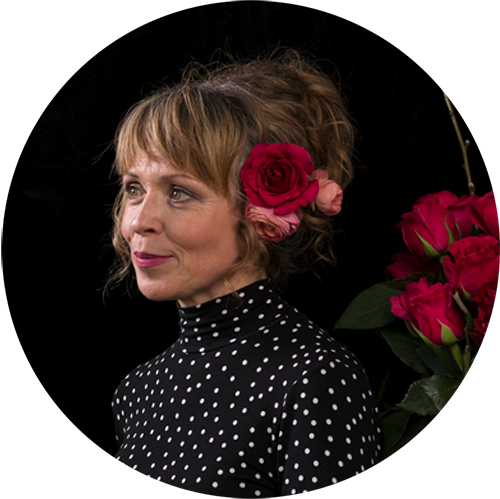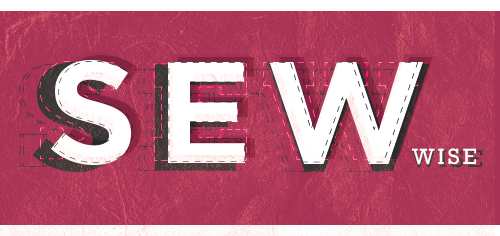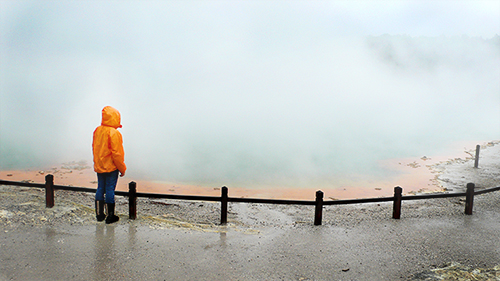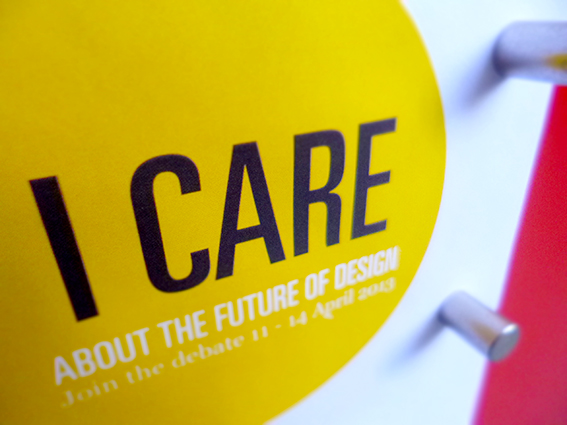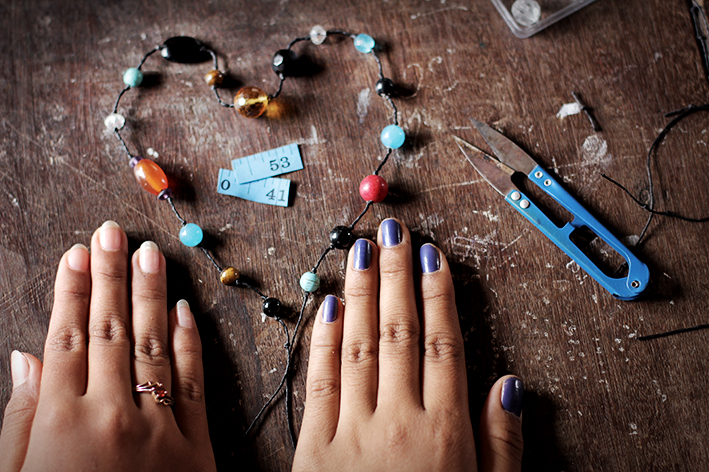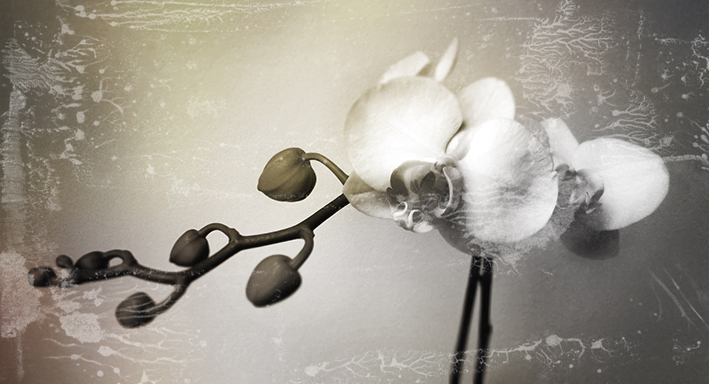 The most beautiful trip made many years ago now, to a shore as far away from troubles at home as I could go. I still dream of the perfect waves and wonder who turned this driftwood into a sculpture by adding a shell.
The most beautiful trip made many years ago now, to a shore as far away from troubles at home as I could go. I still dream of the perfect waves and wonder who turned this driftwood into a sculpture by adding a shell.
_and wisdom comes
How do you find a handle in the middle of a big, explosive dose of inspiration and channel it towards anything useful, floundering?
I'll be honest with you, I'm so inspired by company Hiut Denim on themes of wisdom, craft and their motto to do one thing well that I haven't a clue which one thing to begin with here. But then this is the way with inspiration – it's like an explosion going off, and by definition ideas fly without restraint.
Well, this is one of the big reasons I love what Hiut Denim are doing, and how they are doing it. It's the story of a couple of lovely, soulful individuals who got really excited about resurrecting small town Cardigan's jeans-making industry, which met severe setbacks in recent years. They were determined that humans working together and for each other would create something good out of rubbish:
Hiut Denim built a workshop, they sourced fabric, thread and machines, and a talented bunch of workers.
Inspiration, explosion, boom!
But here's the really good bit. In the aftermath of the explosion and the safety of that workshop, they settled in to a patient discipline, proud of doing one thing well—making beautifully designed and crafted jeans—and treasuring the seamsters who make them. The workshop is where they calm down and forge some order from the wildness of that first explosion, and the love of this experience has turned into a blog on their site.
From out of a thriving business, they share collected insights as Workshop Wisdom:
"The things we make, the things we think-up, we do them from a special place. We spend a lot of time in this place. We get to learn a lot here.
This blog is here to share some of that wisdom about life and work that we learn from hour after hour, year after year, spent toiling away in our humble workshops."
Space, patience, discipline, time to reflect, and commitment to a purpose, this is how wisdom comes.
And Hiut Denim communicate their wisdom without bells or whistles on their elegantly designed website. There's no need for frills here. Simple, direct language echoes a quality of thought that hours of workshop focus have afforded, while evocative black and white photography poetically speaks of hearts and bones hard at work.
Pared back—in design, in language, in image, in vision—Hiut Denim bares its wise, dignified soul. That's where I want to be.
I am massively encouraged looking at this company's site and story. It's about people being real, letting a creative explosion happen, then celebrating that workshop as the place from which wisdom, clarity and focus pour out and make their business shine.
Craft is so important. Settling into workshop ways with your craft—whether fabric, words, images or numbers—is about one of the most precious things you can do to enrich your work. At least, I think so.
Take time to craft something, and you will discover a true quality of thought.
It is a quiet welcome to wisdom.
It says 'no fear' to the creative explosion.
Thank you Hiut Denim. We need more of that in the world.
*
Read more about the Hiut Denim story here: "This town is going to make jeans again!"
_seeing your way in fog
Patient, watching, waiting for moments of clarity.
In the fog of my mind, a couple of tiny focal points shone, and I was able to lock on to those. My path ahead straightened up.
Creating key focal points with typography or illustration is so precious for pointing the way to your audience, through what can be—to them—a fog of information.
I think there are many things good design can help with, but for me, one of the main things is to communicate a message clearly and directly, and help people find their way to the things they need. Providing clear focal points and helping people discern their way through fog is one of the most brilliant and beautiful things you can do...
...and we all like a bit of helpful, brilliant and beautiful, right?
_do you worry about how you look?
Lunchtime chat with Valuable Sharon just now meandered to the topic of beards; specifically, beards with cornflakes stuck in them. We wondered whether or not seeking advice from someone who appeared to have said flakes lodged in their facial hair would lead us to doubt their professional credibility. What do you think about this?
We agreed that we don't mind the odd cornflake.
In fact, we probably prefer the expertise of someone with idiosyncratic cornflakes, because if they know their stuff you may not worry what they look like, and you interpret their lack of care over breakfast cereal as a sign that they have their mind on higher things.
You would actually refer friends to 'the cornflake man' because as long as his advice hits home, he clearly knows his onions (if not his oats), and—in a rather shocking twist of conventional thought, I know—perhaps it even increases his credibility in an appealing and vulnerable display of humanitarian realness.
Confession time: I get worried about my own misplaced cornflakes, and this stops me even stepping out to make my mark in the first place. Do you know what I mean?
Do you get so worried about doing the wrong thing, that you can't commit to anything? Being overly concerned with your it not looking like everyone else's it could be stopping you from making your mark at all.
I think the best we can do is this:
Just get on with it and employ all the tools at your disposal to make sure the truly important things happen for the people out there that need them.
What has this to do with Thinking Made Visual? Quite a lot, I suspect.
Good visual communication means there's always something on the outside that reflects something on the inside, and folks, I don't mean undigested breakfast.
Leave your cornflakes in the comments! ~>
_people connect with people
I've noticed something. Lately, as we swipe and scroll and tap, I've noticed a visual movement back towards rough edges and fingerprints in our graphic design and illustration - that lively lino-cut illustration you liked, or the 'playbill' style graphic design you shared?
Through our swiping, scrolling and tapping, we seem to be drawn towards greater expression, reflecting truer personality. There's a growing tide of design and illustration that shows a resurgence in traditional techniques, or at least reference to them: marks made with letterpress, etching, lithographic printing, pencil, ink and rollers, analogue photography, where evidence of the human hand remains. The craft movement is back. Why is this?
We want real humanity in our shared messages, because it helps us sift through the mass of stuff published online to find people and ideas that we chime with – to look for good personality and character.
What does this mean for you and your visual communication?
- In your design and illustration, aim to speak with real character that rings true to you and your message.
- Work with a designer who is good at bringing personality into visual communication, and who understands the kind of dialogue you, uniquely wish to create.
- Better still, work with a designer who knows how to marry personality with clean, neat, reassuringly tidy layouts (very important for conveying the disciplined togetherness that is your business).
- It's alright to be subjective. It's good if things bare the mark of human hands. This is a celebration of the individual rather than just a box-ticking, corporate fit, and ultimately could really help you define your niche, therefore your audience.
When we find signs of familiar character, of the real human being, then we can better figure out if we're in the right place for a useful conversation.
In a world where we are increasingly rejecting the hard sell, we take more responsibility for making our own, genuine connections to help solve problems.
It is all about YOU, because, after all, people connect with people.
*** ~> practising what I preach, this is me at a recent workshop with letterpress legend Alan Kitching. Soaking in Kitching's expertise is like having Neil Young show you around a fret board. Nerdy, inky, typo-geek buzz!
_what do you care about design?
I found a great quote this week from 'Creative and Design Expert' Keith Frankel at Hubspot:
"The relationship between text and visual elements is not sequential in nature. It is one of interdependence."
Always trying to shape what I do so it works even better with what other people do, this immediately helped me articulate a common thing I experience in work collaborations - maybe something you come up against too from the other angle.
Design—at least, graphic design, illustration and photography—is all too often seen as an afterthought of communication, a way of making pretty, colouring up for entertainment's sake. It is treated as a bolt-on at the end.
Here's the trick: the real power in design is when medium and message are thoroughly entangled. If you work with designers at all, it will really help you to know this, and milk it.
What do I mean by medium and message entangled? Here's a really simple, day to day example:
This week I'm working on some e-book layouts with my friends over at Valuable Content. Their message makes a big point of cutting out the BS to say what you really mean in your business marketing. They hate style over substance, because they want the world to be a better place, with more honesty and greater integrity. Style over substance stops us getting to the heart of what's sustainable, and therefore what is important.
You can imagine, then, my journey with them has been interesting. What often begins with a, "Can you format this and make our presentations look presentable?" has begun turning into, "How can we communicate the key points of this important message more powerfully?"
The e-book is a case in point - they sent me a word document to draft into layouts. I did just that, bearing in mind the end user, viewing the book across different devices, alternative screen layouts, typographic highlights, creating a visual hierarchy of information, and then helpful and perhaps emotive illustration of key points to bring out more expressive qualities. Heart appeal as well as head. They looked at this first draft, spotted some opportunities these design considerations throw up, took back their word document for editing and as a result I'll be developing version two later today.
SYMBIOSIS; dual wings on opposite sides both make a plane fly.
Whether it's developing a short e-book or something else much more huge, design should be implicit in the process, whatever your business is. I happen to be in visual communication, but apply this across the board - product, textile, architectural design, etc. Yes, I do care about the future of design, because I care about people and how we keep a healthy sense of progression and for me, that means good communication.
Sir John Sorrell has some really interesting things to say about it, as does Steven Johnson at Collaborative Change, both of whom I heard speak at last week's Cheltenham Design Festival (a really well-curated, challenging and inspirational event).
I think there really is—thanks Billy Bragg—power in a union (with a small 'u'). If we do what we do because we believe it makes the world a better place, our shared insights and expressions have the potential to become greater than the sum of their parts.
_stringing thoughts together
Thinking about our world and the people in it inspires most of us to action one way or another. When that action is carefully designed and visualised, things can get exciting because we all like to see evidence of really good ideas.
Thinking, made visual. Whether a lovely family moment, a brilliant gig or theatre piece, or immensely satisfying work collaborations, what thoughts do you have or experience right now that are turning into something physical, practical, real - visual?
Freedom Stones is a human rights charity which generates employment for young people in a jewellery-making business. This employment helps those young people avoid being trafficked illegally (where we were, from Cambodia across the border into to Thailand) into the sex industry, or as construction workers.
This project is a very good bit of thinking, and the outcome can be seen clearly, not just in the jewellery design, but in the faces of those involved in the programme who are working their way with dignity out of poverty. Hopefully, my photographs will help Freedom Stones tell the story of this work and generate support to make it sustainable.
Now back at my desk in Bristol, I have a bit of decompressing to do and eagerly return to our day-to-day thinking and visualising! Trips like this always make me even more fond of home, family, colleagues and all our collected plans and shared projects.
A small blue bead—like a tiny thought—threaded together with red beads and clear beads and black beads, to create a sort of visual evidence that our combined power to thread together our thinking and visualise that can put rich oil on the earth's axis.
Good thinking in minds and hearts, turned visual.
_what orchids teach me about design and life
The creative journey can be exactly like this; sitting with ideas tucked away in secret, holding out with faith that something brilliant will appear given the right conditions to flourish.
Making yourself available for creating means not ditching out when you think all you have is a dead-looking stick.
Be prepared: creating is always a joy, always a surprise of life, and never happens on your own terms.
You have to have courage in that empty space, absent of any guarantees. I sit with things that are not yet fully formed, maybe as if looking through a veil, trusting that something is on its way into being.
Holding your nerve and hanging in, even when it appears that nothing is happening, may turn out to be the best gift of all.
_what to do when people are watching
[vimeo http://www.vimeo.com/59564105 w=500&h=375]
Everybody wants to feel inspired.
Story-telling is a great way to captivate and inspire, and film is a fantastic medium with which to tell stories, to roll out great narratives that capture imagination.
Narrative keeps people with you in their wondering.
Simply, we're built to hold out for a good resolution through all sorts of unbelievable twists and turns in life. The more outrageous, the more we want our happy ending, and we'll keep watching for it.
“Lizzie’s film was a highlight of the book launch. We wanted a film that would capture the message of the book, make it visual and compelling, and that we could share online. Lizzie’s film told the book’s story vividly, and quickly. The combination of short text, animated images and music made the concepts come alive. The audience responded really positively, and it lifted the occasion to another level.”
- So, what’s your story?
- If you have a message you'd like to animate, drop me a line with your film idea – I'd love to help you bring it to life.
_do you need some space?
On a scale of 0 to 10, where 10 equals 'Felix Baumgartner free-falling from the edge of space' and 0 equals 'stuck in a very small lift with Brian Blessed', as you tap around pages on the web how spacious does your experience feel?
Space is important.
We need space to let ideas breathe and grow. We don't find enough of it. We need to find it in order to consider how we respond to what messages come towards us. This is true in design, it's true with music, and it's true in life generally.
Good communication in design, I believe, is about making way for a dialogue. If you are trying to make an emotional connection with people, provide room for them to think about what you've just said, or done - time for it to sink in.
Creating space around a thing means it becomes a focal point. That thing turns into a place for the eyes, mind and heart to land, and the space around it means—for a small moment—that it's message might be considered carefully without interruption.
Creating space in your layouts, designs and communications means that the messages you choose to put across have greater emphasis, and they also have room to grow. If a message relies on hard sell and no let up, then if you make any sell at all, you're likely to elicit an ill-considered purchase, which will not help you create the relationships required for sustainable business in which you are known as trustworthy, respectful, and for putting your clients' best interests at heart.
Finding space in work and life is crucial because you will come to things more considered, more reconciled, and you will also be better for having taken the time you need to wrestle with sometimes conflicting ideas.
Someone gives you their message; don't be bullied into reaction. Insist on space to think it through and make your own, dignified response.
Space allows true dialogue to evolve - dialogue that moves you, and ultimately that moves us.
- Amidst all the excited visual chatter online, how do you use visual communication to create space that lets the really important things stand out?
- Have you found any interesting examples where a message is amplified (or squashed) by a good (or bad) use of space in design?
*
The images in today's post I created with a photograph of the trees outside our new office window. We moved in yesterday, and having a big sky view again after a few years of working in subterranean spaces, a view of the treetops symbolised my thoughts very well.
If you would like to use these images in your blog posts, please do get in touch.
Thanks.
